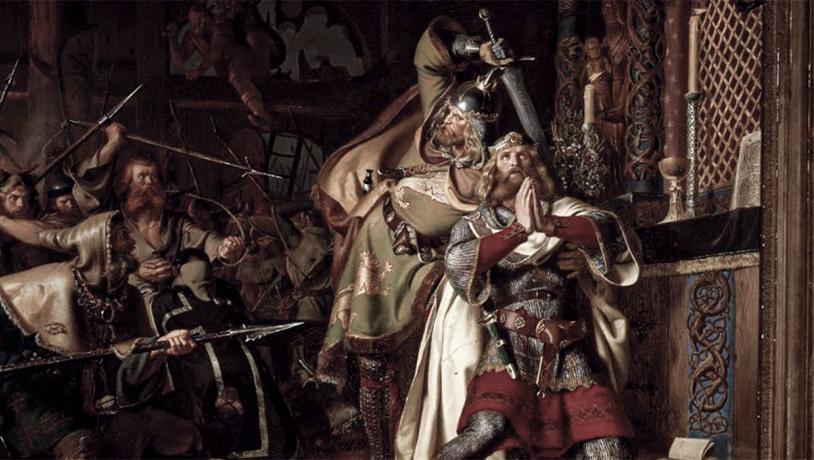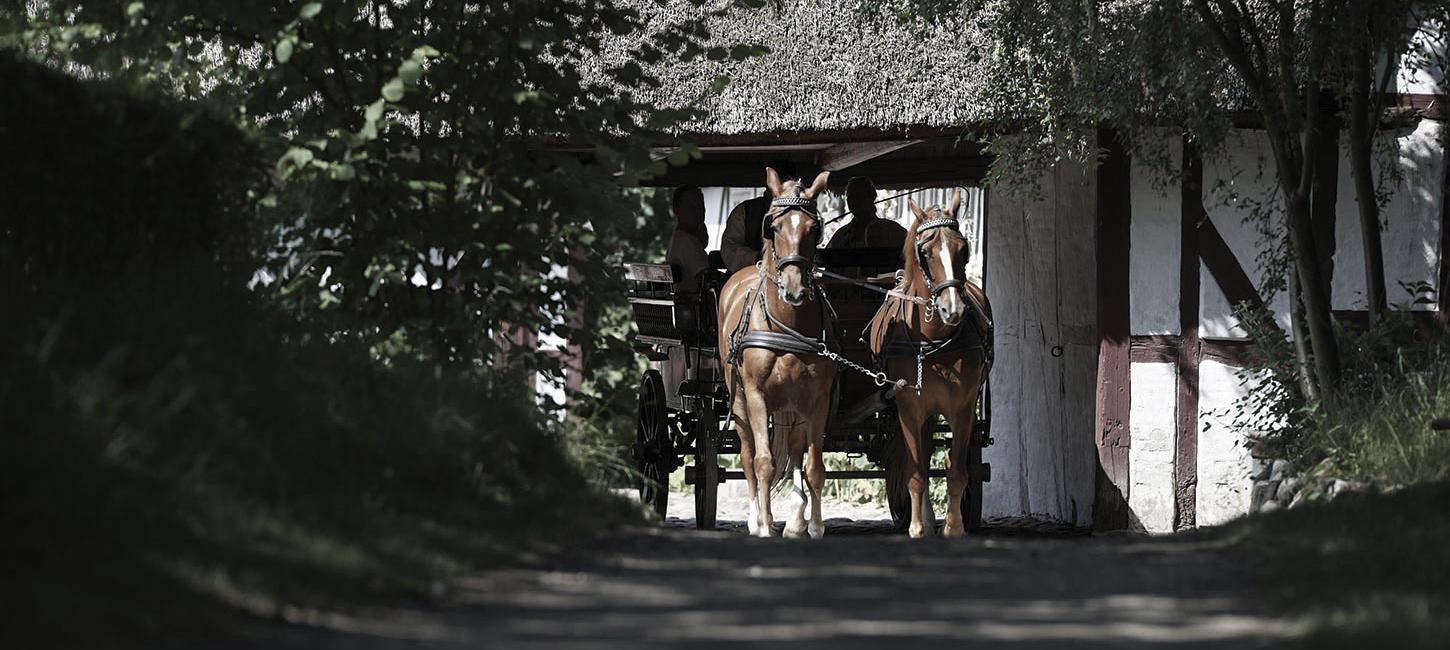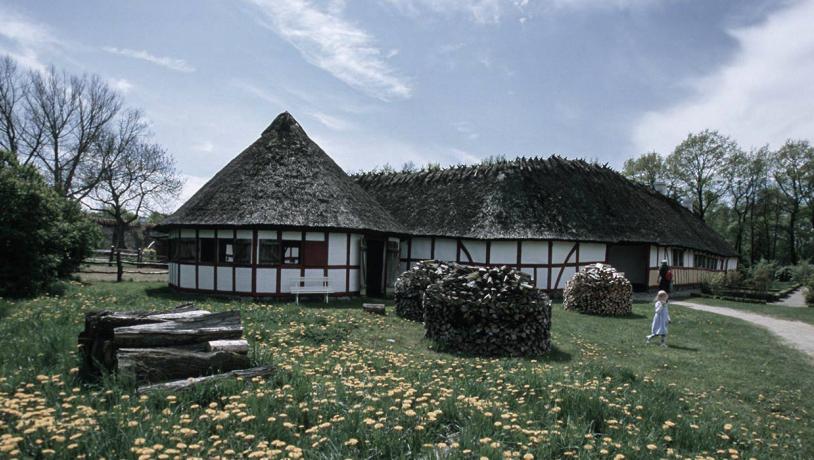Top attractions in Odense for history geeks
Do you love history? Getting to know how a city developed into what it is today? Or just getting to know the historical scandals? Odense has plenty of history (and scandals) for you to snoop around in, and perhaps learn a bit about Danish culture and history in the process.
Dating more than 1000 years back, Odense have been an interesting city from day one. Despite its size, Odense was first mentioned in 988, and at this time it was a bishopric, making it a large city for its time.
Troughout history, Odense have had a strong connection to superstition, religion and the history of Denmark.
In Odense it is possible to travel back in time, and experience important parts of the collective Danish history.
Norse Mythology and the Iron Age
Start your time travels in the Iron Age, with a visit to Odins Odense. Travel back to the years 500 BC to 1100 AD and experience life in the Iron Age and the transition to Viking Age.
Life in Denmark was tough back then, the struggle to find and produce food was difficult, and they had to fight other people, who were looking for new and more prosperous areas to settle in.
The Danes knew that there was a higher power, so they worshipped the Gods from the Norse Mythology. In Odense in particular, Odin, the ruler of the Norse Gods, was honoured, as our city name translates to “Odin’s shrine”.
Explore the small village, visit the blacksmith to get an impression of the old craft or go to the sacrificial site to honour Odin and the ancient Norse Gods.

Photo:Odense Bys Museer
Meet the last Danish Viking King
During the Viking Age, Denmark was quite the Kingdom, not only did the Vikings rule Denmark, but also parts of Sweden and England, as a result of the many raids. Time made the number of attacks decrease, and Denmark became Christians.
King Canute was a very Christian King, but still very much a Viking at heart, as his biggest desire was to rule England.
Sadly, his greed for more land started a peasant revolt that cased him through the country.
When Canute reached Odense, he when inside a church to seek Gods protection. Little did it help, as he was killed moments later. Miracles happened at Canute’s grave, and he became an important figure in the Danish Royal Family when he was recognised as a saint.
Perhaps you will experience a miracle when you visit Canute the Holy’s remains in the Cathedral, Saint Canute Church.
From rags to riches – to rags
After Canute was recognised as a saint, the number of monasteries and churches grew, as everybody wanted to be close to the royal saint. Odense grew and not only did the many religious institutions attract outside visitors to the city, but several Danish Royals visited the town, some even lived here.
The city had a long period of growth, especially with trades as many of the city's merchants earned lots of money. This resulted in plenty of new buildings, some of which you can still see today.
Good times do not last, and the city went through some difficult years after the war against Sweden. Many fled the city, and several of the well-established businesses closed.
Visit TID, our City Museum, to learn much more about Odense's history and how the city became the third-largest in Denmark. If you go for a stroll, make sure to go past the old town and area around the city museum to see some of the old buildings. Make a detour past Saint Hans Church with its outside pulpit and Odense Castle.
Photo:Odense Bys Museer
Fresh air in the countryside and smoke and steam in the city
Everything is pastoral and idyllic in the countryside, at least that was the message of the Golden Age. Many Danish values come from developments that happened during the 1800s, as well within politics, education as technology.
During the 19th century, most people lived in the countryside, working as farmers, kitchen helpers or similar manual labour, and most of your day was filled with hard work.Industrialisation finally reached Odense during the 1800s, and with the new canal, Odense became a real market town. People moved from the countryside and into the city, which made Odense double in size. Commerce was growing, a new railway was made, and new residential areas were created to house all the new workers in the city.
Travel back to a village from the 1800s, learn about traditional crafts or talk to the Vicar's wife, when visiting the Funen Village. The original houses give you an idea about how people lived, and what life was like back in the day.
Staying in the city centre, you can still catch a feeling of the industrialisation era in the area around the old Textile Mill Brandts. In Farvergården you will find Tidens Samling - museum for Clothes, Design and Interior in the 20th century. Experience the Danes' recent past in the living rooms from the 1900s up to the 1990s. All your senses can be put to use when you sit in the furniture, open the drawers and flip through the books.
Still making history
Despite having had many ups and downs throughout history, even today, Odense is still making history.
Some parts of the old Odense are still showing here and there, but the new and modern portion is becoming a larger part of the city's narrative. Odense is one of the favourite cities for start-ups, innovation is more than welcome, and robotics, drone, medical cannabis and health tech sectors are booming.
When you walk through the city centre, the city's ambition is clear. In the 1960s a four-lane road was built through the city centre to accommodate the growth in cars, but today we are going in a new direction. The road is closed and is being transformed into living spaces, businesses, green areas and a new Hans Christian Andersen museum bit by bit.
Experience history in Odense, both old and new.

